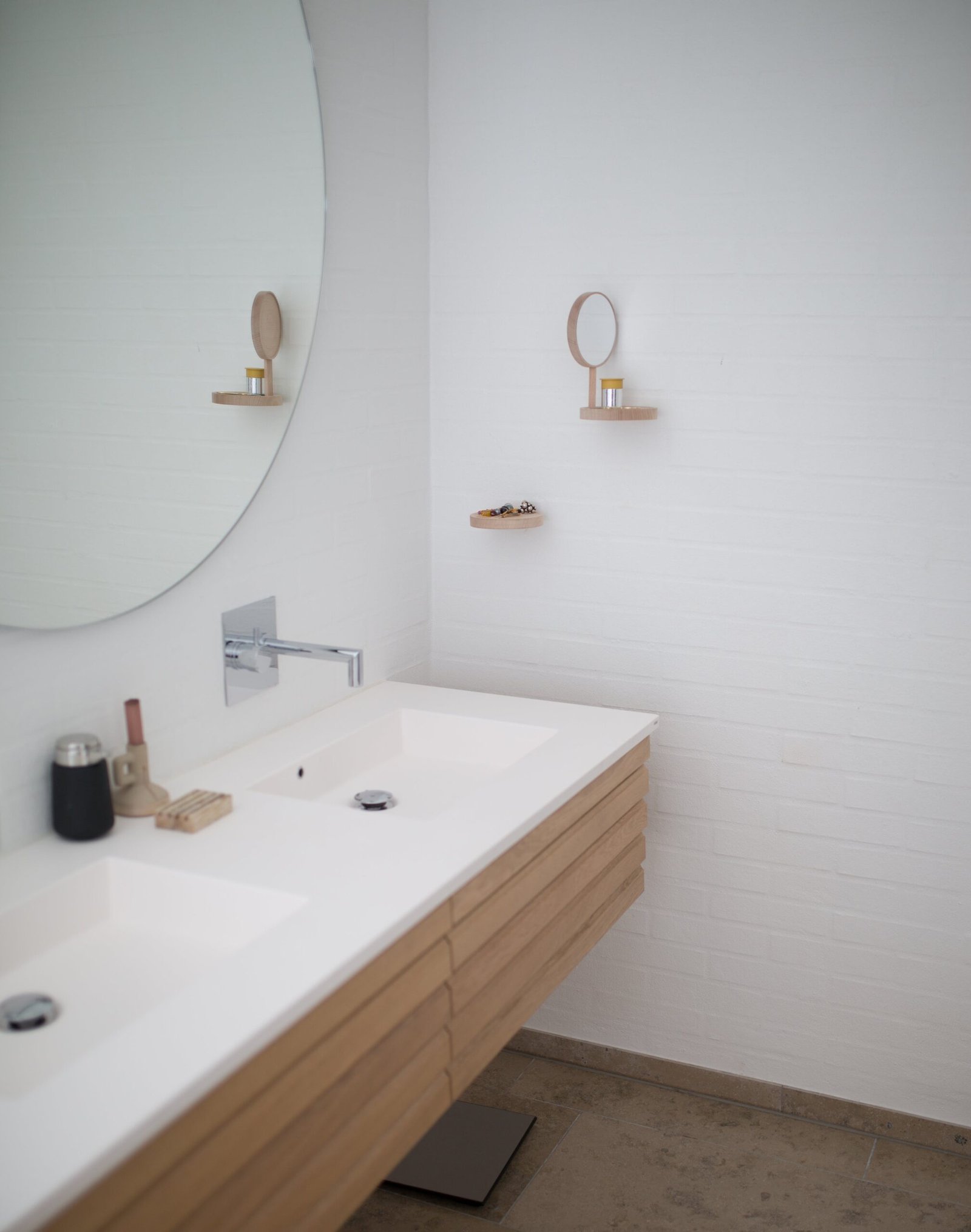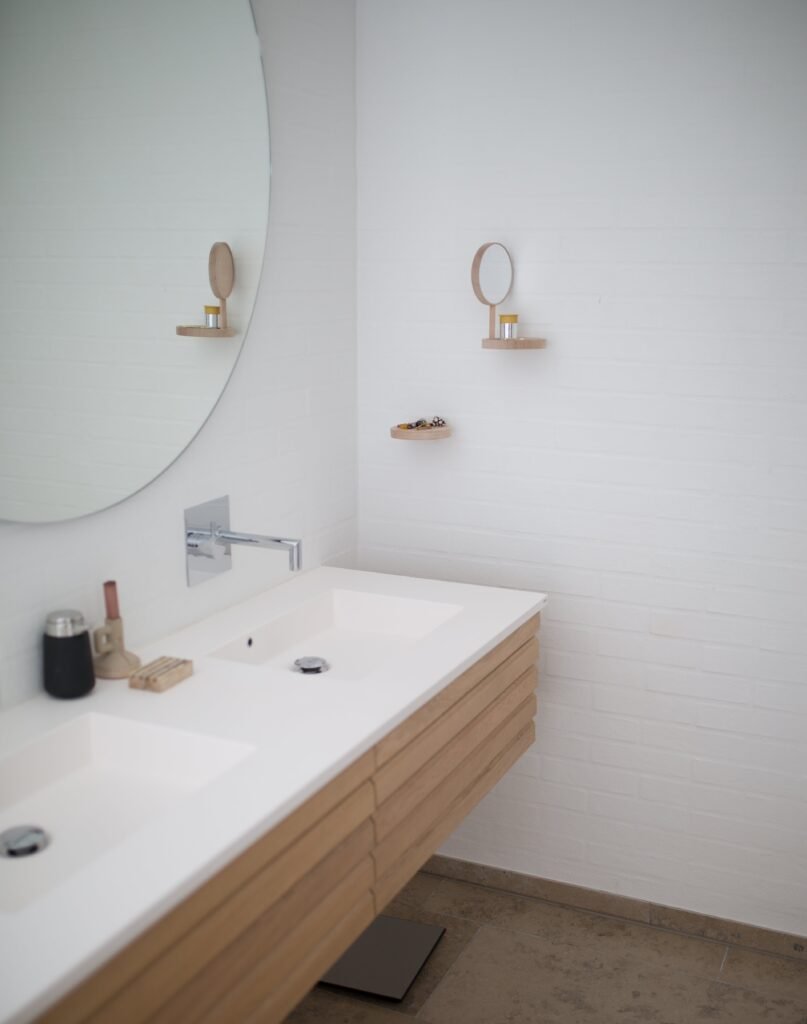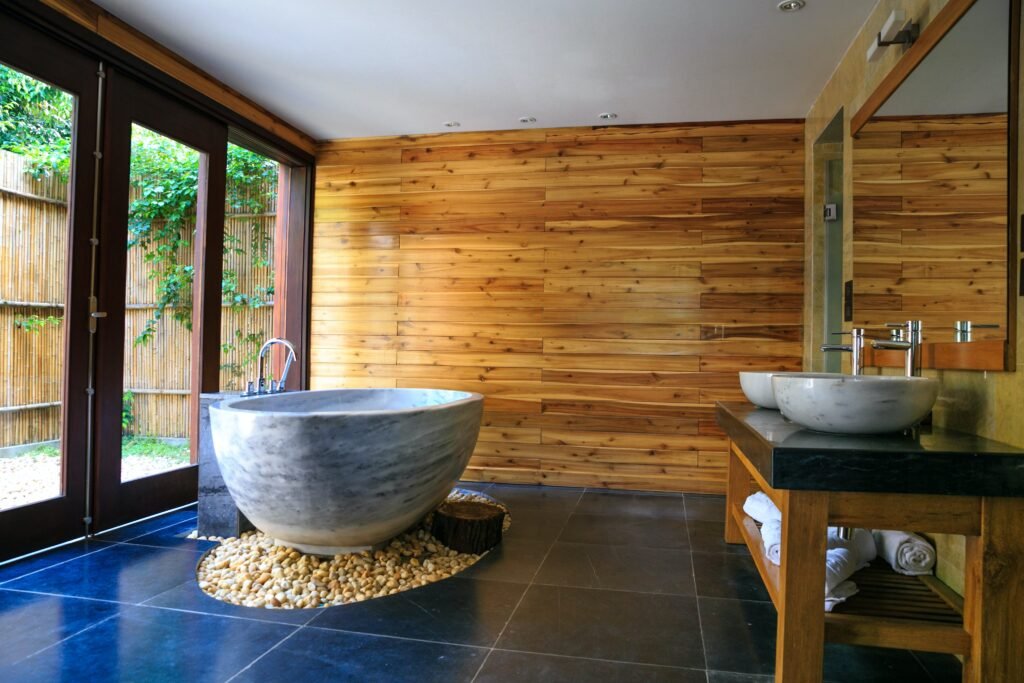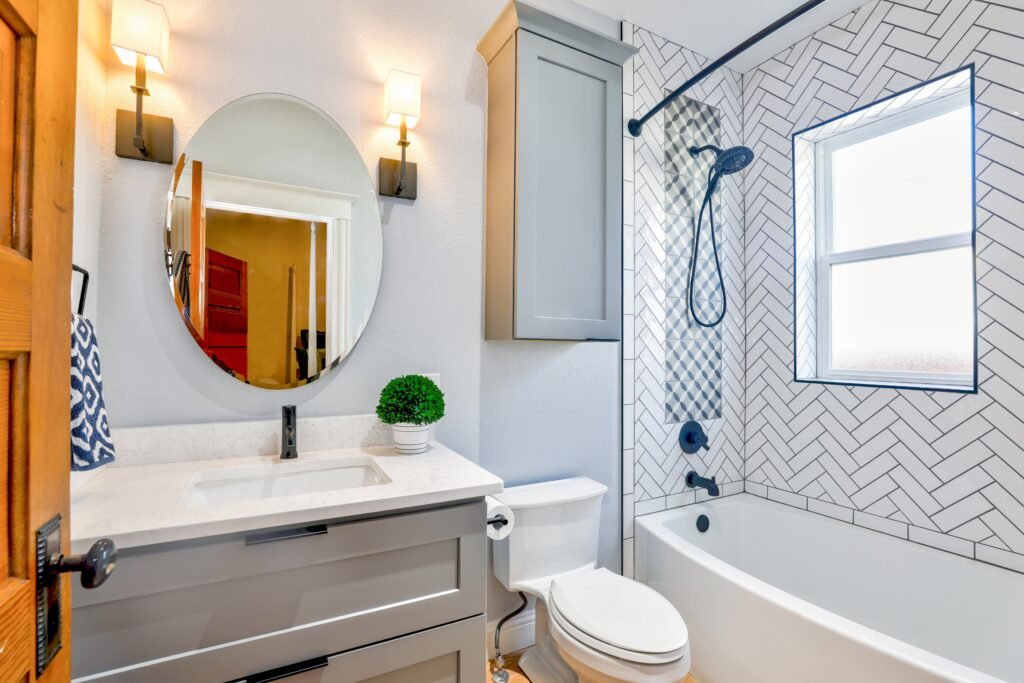
Are you tired of the daily monotony of your shower routine? Are you looking for simple and cost-effective ways to transform your shower experience? Look no further! In this article, we will provide you with a collection of easy and affordable DIY shower tips that will help you create the ultimate oasis right in the comfort of your own bathroom. From refreshing scents to innovative storage solutions, you won’t believe how a few simple changes can make such a big difference. So, grab your toolbox and get ready to turn your shower into a haven of relaxation!

This image is property of images.pexels.com.
Choosing the Right Shower Head
When it comes to choosing the perfect shower head for your bathroom, there are a few factors you should consider. First and foremost, you’ll want to think about your water pressure and flow rate. If you have low water pressure, you may want to opt for a shower head that is specifically designed to increase pressure. On the other hand, if you have high water pressure, you’ll want to look for a shower head that has adjustable settings to control the flow rate.
There are several different types of shower heads to choose from, each with their own unique benefits. Rain shower heads, for example, provide a luxurious and soothing shower experience by mimicking the sensation of rainfall. Handheld shower heads offer more flexibility, allowing you to direct the water exactly where you need it. Traditional fixed shower heads are a popular choice for their simplicity and ease of use.
Factors to consider when selecting a shower head include the size of your shower, your personal preferences, and any specific features you may be looking for. Some shower heads have built-in filters to remove impurities from the water, while others have water-saving features to help conserve water. Take your time to explore different options and choose the one that best fits your needs and preferences.
Cleaning and Maintaining Your Shower
Keeping your shower clean and well-maintained is essential for maintaining its functionality and extending its lifespan. Fortunately, there are several effective homemade shower cleaner recipes that you can easily make using common household ingredients. For removing soap scum and hard water stains, a mixture of vinegar and dish soap works wonders. Simply spray the solution onto the surface, let it sit for a few minutes, and then scrub away the grime.
Mold and mildew can be a common issue in showers, especially in areas with high humidity. To prevent and remove mold and mildew, a solution of bleach and water can be used. Be sure to wear protective gloves and ventilate the area properly while using this mixture. Another option is to use hydrogen peroxide, which is effective in killing mold and mildew without the strong odor of bleach.
Regular maintenance of grout and caulking is also important to prevent water damage and maintain the appearance of your shower. Inspect the grout and caulking regularly for any signs of wear or damage and replace as needed. A simple way to maintain them is to clean them regularly with a mixture of baking soda and water. This will help remove any dirt or grime and keep the grout and caulking in good condition.
Creating a Spa-like Experience
Transform your shower into a relaxing spa-like experience by incorporating a few extra features. One way to enhance your shower is by using aromatherapy. Essential oils can be added to your shower routine to create a soothing and invigorating atmosphere. Simply add a few drops of your favorite essential oil to a washcloth or sponge and place it in the shower. The steam and hot water will release the aroma, and you can enjoy the calming effects as you shower.
Installing a rain shower head is another great way to create a luxurious spa-like experience. These shower heads are designed to mimic the sensation of rainfall, providing a gentle and relaxing shower experience. With a wide coverage and even distribution of water, a rain shower head can make you feel like you’re standing under a warm tropical downpour.
If you enjoy a massage-like effect in the shower, consider increasing the water pressure. Some shower heads have adjustable settings that allow you to switch between different spray patterns, including a high-pressure massage setting. This can help relax your muscles and provide a rejuvenating experience.
For added comfort, consider adding a shower bench or seating to your shower area. This provides a place to sit and relax while enjoying the warm water or to rest your foot while shaving. It can also be useful for individuals with limited mobility who need assistance or support while showering.
Incorporating a steam function into your shower is another way to elevate your shower experience. Steam showers create a spa-like environment by generating steam that envelops your body and provides various health benefits, such as improved circulation and reduced stress. Steam shower units can be installed in your existing shower or as a separate enclosure.
Enhancing Safety in the Shower
When it comes to the safety of your shower, there are a few measures you can take to minimize the risk of accidents. Installing grab bars is a simple yet effective way to provide support and stability while in the shower. These bars can be strategically positioned near the entrance, as well as inside the shower for additional assistance. They can be particularly useful for individuals with mobility limitations or balance issues.
Using non-slip mats or decals in your shower can help prevent slipping and falling on the wet surface. These mats and decals come in various sizes and designs, allowing you to choose one that fits your shower perfectly. Additionally, they’re easy to clean and maintain, making them a practical and affordable safety feature.
Choosing a shower curtain with a weighted bottom is another safety consideration. A weighted bottom helps keep the curtain in place, preventing water from escaping and wetting the bathroom floor. This reduces the risk of slipping on a wet surface and provides a safer showering experience.
Properly adjusting the water temperature is crucial to prevent scalds. It’s recommended to set your water heater to a maximum temperature of 120°F (49°C) to prevent accidents. Additionally, consider installing a thermostatic mixing valve or a pressure-balancing valve to regulate the water temperature. These valves help maintain a consistent water temperature, even if there are fluctuations in the water supply.
Adding extra lighting to your shower area can also enhance safety. Adequate lighting can help you see clearly and avoid any hazards while showering. Consider installing lighting fixtures near the entrance, inside the shower, and in other areas where additional visibility is needed.

This image is property of images.pexels.com.
Saving Water and Energy
Conserving water and energy in your shower is not only beneficial for the environment but also for your utility bills. Installing a low-flow shower head is one of the most effective ways to save water. These shower heads are designed to limit the flow rate while still providing a satisfying shower experience. They can significantly reduce water consumption without compromising on water pressure or temperature.
Using a shower timer is another simple yet effective strategy to save water. Set a timer for your shower and try to keep your showers within a specified time limit. This will help you become more aware of your water usage and encourages you to be more mindful of your showering habits.
Insulating hot water pipes is an often overlooked yet essential step in reducing heat loss and saving energy. Insulation ensures that hot water reaches your shower more efficiently, reducing the need to run the water for long periods of time while waiting for it to heat up. By minimizing heat loss, you can also reduce the amount of energy required to heat water, resulting in lower energy costs.
Using hot water efficiently is another key factor in saving water and energy. Avoid leaving the water running unnecessarily, and consider turning off the water while lathering or shampooing. Taking shorter showers also helps minimize water usage and conserve energy.
Replacing or Repairing Shower Fixtures
Over time, shower fixtures may develop issues that require repair or replacement. Identifying common shower fixture issues can help you determine the best course of action. Dripping showerheads are a common problem that can waste a significant amount of water if not addressed promptly. In most cases, a dripping showerhead can be easily fixed by replacing a worn-out washer or O-ring.
A faulty diverter valve is another issue that may arise in showers with multiple outlets, such as a handheld showerhead or bathtub spout. If the diverter valve is not functioning properly, it may affect the water flow and prevent you from switching between different outlets. Replacing the diverter valve can usually resolve this issue and restore the proper operation of your shower.
If your shower fixtures are outdated or no longer meet your needs, it may be time for an upgrade. Modern shower fixtures come in various styles and designs, allowing you to choose a new set that complements your bathroom decor. When selecting new fixtures, consider opting for eco-friendly options that are designed to conserve water and energy, contributing to a more sustainable home.

This image is property of images.pexels.com.
Upgrading Your Shower Storage
Having adequate storage in your shower is essential for keeping your bathroom organized and clutter-free. Installing shower caddies or organizers can help you keep all your shower essentials within reach. These storage solutions typically attach to the shower wall and provide compartments for holding shampoo, conditioner, soap, and other shower necessities.
Utilizing corner shelves or niches is another practical way to maximize storage space in your shower. These can be built into the corner of your shower or installed as standalone shelving units. Corner shelves and niches provide additional space for storing bottles, razors, and other shower items.
If you need more hanging storage options, consider adding shower hooks or racks. These can be mounted on the shower wall or hung over the showerhead, providing a convenient place to hang loofahs, washcloths, and other items.
If you’re looking for a more permanent and integrated storage solution, creating a built-in shower bench with storage can be a great option. A built-in bench not only provides a place to sit but also offers concealed storage compartments underneath. This allows you to keep your shower essentials close by while maintaining a clean and organized shower environment.
For items that need to be kept dry and protected, waterproof storage containers are a practical solution. These containers can be placed on shower shelves or hung on the wall, keeping your items safe from water damage. Look for containers that are specifically designed for use in the shower, with features such as suction cups or hooks for easy attachment.
Decorative and Functional Shower Curtains
Shower curtains can be both decorative and functional, adding style and personality to your bathroom while serving a practical purpose. When selecting the right fabric or material for your shower curtain, consider factors such as water resistance, durability, and ease of cleaning. Polyester and vinyl are popular choices due to their water-repellent properties and low maintenance requirements. Fabric shower curtains can also be a stylish option if you prefer a softer, more luxurious look.
Choosing a shower curtain liner is equally important, as it helps protect the curtain from water damage and mildew. Opt for a liner that is mold and mildew resistant, preferably made of materials such as PVC-free plastic or polyester. Look for liners with reinforced grommets for added durability and rust-resistant hooks for easy installation.
Curtain hooks or rings are essential for hanging your shower curtain securely and smoothly. Choose hooks or rings that are made of rust-resistant materials such as stainless steel or plastic, ensuring that they will withstand the moist bathroom environment without deteriorating.
To add a touch of elegance and functionality, consider incorporating curtain tiebacks or clips. These accessories can be used to hold your shower curtain open, allowing more light into your shower and creating a more spacious feel. They also add a decorative element to your bathroom decor, enhancing the overall aesthetic.
Incorporating pattern and color into your shower curtain can instantly transform the look and feel of your bathroom. Choose a pattern or color scheme that complements your existing decor or opt for a bold statement piece to add a pop of personality. With the wide range of options available, you’re sure to find a shower curtain that perfectly suits your style.
Easy Fixes for a Leaky Shower
A leaky shower can be frustrating and potentially lead to water damage if not addressed promptly. Identifying the source of the leak is the first step in fixing the problem. Common sources of leaks include a dripping shower faucet, a leaking shower pan, or gaps around the shower doors or fixtures.
Repairing a leaky shower faucet is often a simple DIY task that can save you money on plumbing repairs. In most cases, a dripping faucet is caused by a worn-out washer or valve seat. By replacing these components, you can stop the leak and restore the proper functioning of your faucet.
Fixing a leaking shower pan may require more extensive repairs. If there are cracks or damage to the pan, water can seep into the surrounding areas, causing water damage and mold growth. Depending on the severity of the damage, repairs may involve patching the cracks, resealing the pan, or even replacing the entire pan.
Addressing leaking shower doors or gaps can help prevent water from escaping and causing damage to your bathroom floor. Applying waterproof caulk or sealant to any gaps or areas where water may be escaping can help create a watertight seal. Additionally, check the condition of the shower door seals and replace them if necessary to ensure a proper fit and prevent leaks.
Waterproofing and sealing problem areas in your shower is crucial to prevent future leaks. Inspect the grout, caulking, and any other areas vulnerable to water penetration. Repair or replace any damaged or deteriorated materials to maintain a watertight shower enclosure.
Budget-Friendly Shower Updates
Updating your shower doesn’t have to break the bank. There are several budget-friendly options that can give your shower a fresh look and feel without a major renovation.
If you have a fiberglass shower, painting or refinishing it can be a cost-effective way to breathe new life into it. Choose a paint specifically formulated for use on fiberglass surfaces and follow the instructions carefully for the best results. Alternatively, you can consider refinishing the shower to give it a smooth and shiny finish.
Replacing shower curtains and hardware is another simple and affordable way to update your shower. Choose a new shower curtain that complements your bathroom decor and opt for matching hardware, such as curtain rods, hooks, and rings. This can instantly refresh the look of your shower without breaking the bank.
Updating the showerhead is a quick and easy way to give your shower a modern look. Choose a sleek and stylish showerhead that suits your preferences and matches your bathroom decor. With a wide range of options available, you can find an affordable showerhead that elevates your shower experience.
Using removable adhesive hooks or storage solutions is a practical and budget-friendly way to add storage to your shower. These hooks can be easily attached to the shower wall without the need for drilling or damaging the tiles. They are perfect for hanging loofahs, washcloths, or other shower essentials.
If you’re feeling creative, consider DIY shower curtain and bath mat ideas. You can make your own shower curtain by sewing together fabric or repurposing a bedsheet. For a personalized touch, add embellishments such as lace trim or decorative tassels. Similarly, you can create a unique bath mat by repurposing old towels or using waterproof fabric and nonslip backing. These DIY projects allow you to customize your shower accessories and showcase your creativity.
In conclusion, there are numerous ways to improve your shower experience, maintain its functionality, and enhance safety without breaking the bank. By considering factors such as water pressure, flow rate, and personal preferences, you can select the right shower head for your needs. Cleaning and maintaining your shower regularly not only keeps it looking its best but also prevents mold, mildew, and other issues. Creating a spa-like experience can be achieved through aromatherapy, rain shower heads, increased water pressure, and the addition of seating or steam functions. Enhancing safety in the shower can be accomplished by installing grab bars, using non-slip mats, choosing the right shower curtain, adjusting water temperature, and adding extra lighting. Saving water and energy is important for the environment and your utility bills, and can be achieved with low-flow shower heads, shower timers, pipe insulation, and efficient use of hot water. When replacing or repairing shower fixtures, identify common issues, such as dripping showerheads or faulty diverter valves, and consider upgrading to eco-friendly options. Upgrading shower storage can be achieved through the installation of caddies, shelves, hanging options, or built-in benches. Decorative and functional shower curtains can add style to your bathroom while offering practical benefits. Fixing leaks and waterproofing problem areas are important for preventing water damage and maintaining the integrity of your shower. Finally, budget-friendly updates can be made through painting or refinishing fiberglass showers, replacing curtains and hardware, updating showerheads, using removable adhesive hooks, or indulging in DIY projects like homemade shower curtains and bath mats. With these tips, you can create the perfect shower environment that suits your needs and elevates your daily routine.

